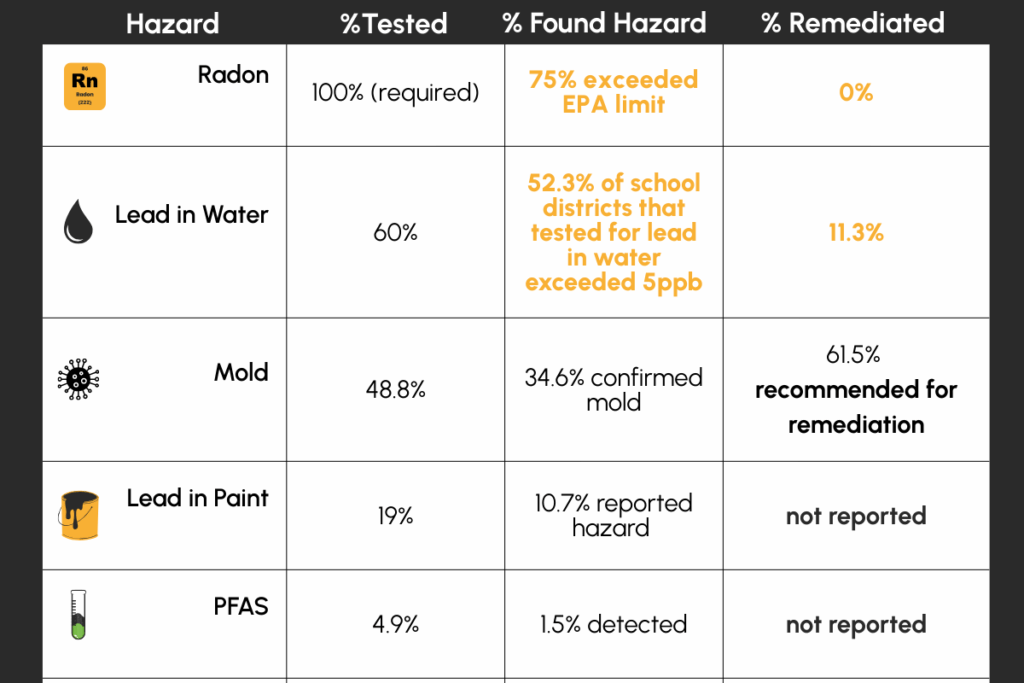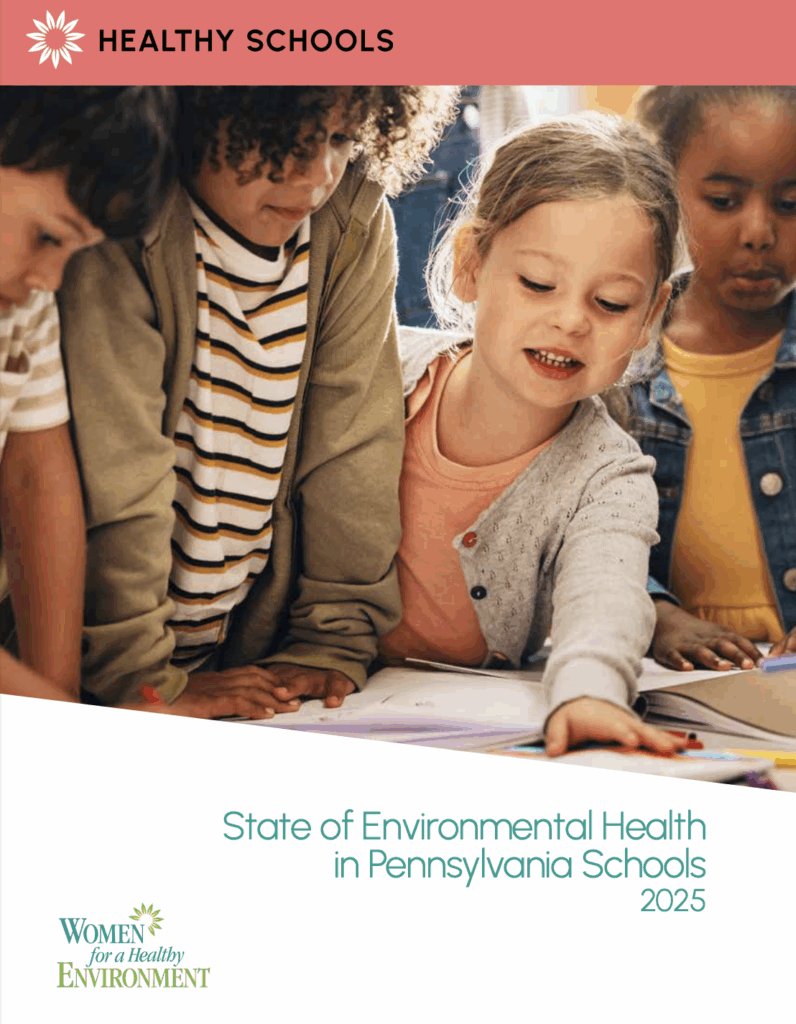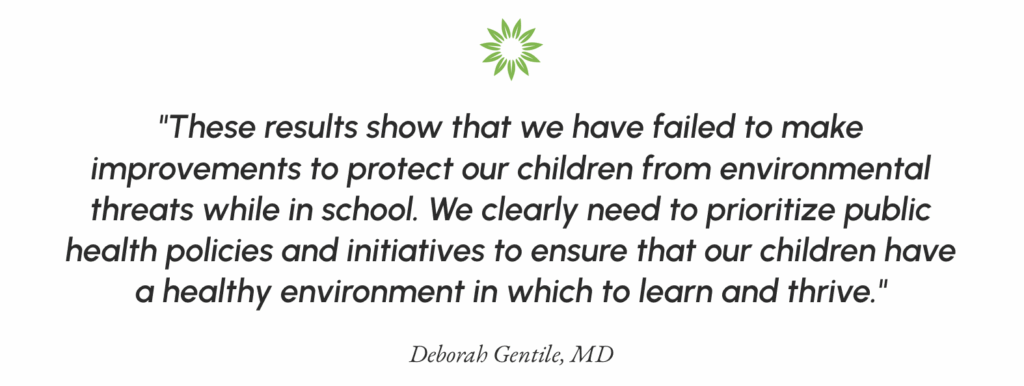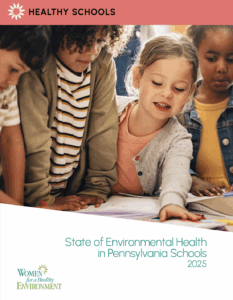When we send our children to school, we expect them to be in a safe, healthy environment that promotes learning and growth. Unfortunately, for too many Pennsylvania students, that’s not the case. The third State of Environmental Health in Pennsylvania Schools report, released by Women for a Healthy Environment (WHE), reveals a concerning reality: the very places meant to nurture our children are often silently harming them. This report, based on data collected from 166 school districts across the state, highlights serious issues with environmental hazards such as lead in water, radon exposure, and poor indoor air quality.

Kids: The First and Worst Affected
Children are especially vulnerable to environmental harms because their bodies are still developing. They breathe more air, drink more water, and absorb more toxins relative to their size than adults do. Invisible threats like radon, lead, and poor indoor air quality can have devastating, long-lasting effects on their health and development.
What is most shocking about our findings is not just the presence of these hazards, but the widespread inconsistency and inaction in addressing them. While some schools have made small improvements, many districts show a lower rate of environmental testing and remediation than in the past. When hazards are found, all too often, nothing is done. The data also reveals a clear pattern: older, rural, and lower-income districts face the greatest risks and have the fewest resources to address them. This is an issue of environmental justice.
Our Findings

The Lead Emergency
Our report found that an alarming 94.8% of districts that test for lead in their drinking water find it. Yet, fewer than 12% take any action to fix the problem. Lead is a neurotoxin that can cause permanent damage to a child’s developing brain, leading to learning disabilities, behavioral problems, and lower IQs. This isn’t just about a few old buildings; this is a widespread crisis affecting a generation of students. We have the technology to remove lead from water, but without consistent testing and mandatory action, our children remain at risk
The Radon Crisis
Pennsylvania has a unique and severe radon problem. Nearly 98.5% of our state’s counties are in the EPA’s highest radon risk zone, yet only 5% of school districts test for this odorless, invisible killer. Radon is the second leading cause of lung cancer. When districts do test and find dangerous levels, most fail to take the necessary steps to mitigate the hazard. Leaving this issue unaddressed is unconscionable.
The Asthma Epidemic
Beyond these invisible threats, our report also highlights a visible public health crisis: asthma. Our data analysis revealed an average asthma rate for Pennsylvania children of 13.9%, nearly double the national average. In some districts, this rate soars to as high as 32.6%. This represents thousands of children who struggle to breathe every day in school, affecting their ability to learn and thrive. Poor indoor air quality, exacerbated by mold, pests, and chemical cleaners, is a major trigger for asthma attacks. The COVID-19 pandemic brought a renewed focus on ventilation, but many schools are still not using effective, environmentally friendly cleaning products that would improve air quality.
We Have the Solutions
The good news is that we have the knowledge, tools, and bi-partisan legislative support to fix these problems.
- Senate Bill 986 and House Bill 341 would address the lead crisis by providing $30 million in funding to replace outdated water fountains with lead-filtering systems, require annual testing, and mandate immediate action when lead is detected.
- Senate Bill 760 and House Bill 289 would tackle the radon crisis by requiring mandatory testing every five years, mandating radon-resistant construction for new schools, and requiring EPA-approved mitigation when dangerous levels are found.
These are not just numbers and statistics; they are about the daily reality for more than 1.7 million Pennsylvania children. Every child, regardless of their zip code or family income, deserves a healthy and safe learning environment.
A healthy school is a public health issue that requires the collaboration of the entire school community—parents, school personnel, and local, state, and federal leaders. As our state budget remains at an impasse, the message is clear: now is the time for leadership and courage. We must insist on funding for healthy learning environments in every community across Pennsylvania to ensure a brighter future for our children.








